Energy Solution

Is geothermal energy a practical solution for colder climates ?
Geothermal energy is a renewable source of energy that comes from the heat generated by the Earth's core. It has been used for centuries in various forms, such as hot springs and geysers. In recent years, there has been an increasing interest in using geothermal energy as an alternative to fossil fuels. But is it a practical solution for colder climates? Let's explore this question further. Advantages of Geothermal Energy in Colder Climates: 1. Reliable Source of Energy: Unlike other renewable sources like solar or wind power, which are dependent on weather conditions, geothermal energy can be harnessed all year round, regardless of the temperature outside. This makes it an ideal source of energy for colder climates where there may be long periods of ice and snow. 2. Low Emissions: Compared to fossil fuels, geothermal power plants produce significantly fewer greenhouse gases and air pollutants. This makes it an environmentally friendly option for communities looking to reduce their carbon footprint. 3. Cost-Effectiveness: While the initial cost of setting up a geothermal power plant can be high, the long-term costs are relatively low compared to other sources of energy. Once established, geothermal power plants require little maintenance and have a lifespan of several decades. This makes it a cost-effective solution for colder climates where energy demands are high due to heating needs. Challenges of Geothermal Energy in Colder Climates: 1. Limited Availability: One of the main challenges of using geothermal energy in colder climates is its limited availability. Not all areas have access to geothermal resources, and even those that do may not have enough heat to generate significant amounts of energy. This means that while geothermal energy can be a practical solution for some areas, it may not be feasible for others. 2. High Initial Costs: As mentioned earlier, the initial cost of setting up a geothermal power plant can be high. This can be a barrier for communities with limited financial resources or those without access to government subsidies or grants. Additionally, drilling equipment and expertise may need to be imported from other countries, adding to the overall cost. 3. Environmental Impact: While geothermal energy is generally considered to be environmentally friendly, there are still some potential impacts associated with its use. For example, drilling activities can disturb wildlife habitats and disrupt local ecosystems. Additionally, if not managed properly, geothermal power plants can release harmful chemicals into the atmosphere or nearby water sources. Conclusion: In conclusion, geothermal energy can be a practical solution for colder climates under certain conditions. Its reliability, low emissions, and cost-effectiveness make it an attractive option for communities looking to reduce their reliance on fossil fuels. However, its limited availability, high initial costs, and potential environmental impacts must also be considered before making any decisions about implementing geothermal energy projects in colder climates.

Is biomass energy a sustainable solution, considering the resources required to produce it ?
The text discusses biomass energy, which is derived from organic materials like wood, crops, and waste. It is often considered a sustainable alternative to fossil fuels, but its sustainability depends on various factors such as land use, water consumption, nutrient management, and energy inputs. The potential environmental impacts include carbon emissions and waste management. Economic considerations involve job creation and cost competitiveness. Social impact includes energy access and public health. Biomass energy has the potential to be a sustainable solution, but its actual sustainability depends heavily on how it is produced and utilized.

What are the most effective energy storage solutions currently available ?
The text discusses the crucial role of energy storage in modern energy systems, enabling the utilization of excess energy during low demand periods for peak demand. It presents a summary of various effective energy storage solutions, including pumped hydro storage, battery storage, compressed air energy storage (CAES), flywheels, flow batteries, superconducting magnetic energy storage (SMES), and thermal energy storage. Each solution has unique features and applications, such as high capacity for pumped hydro, fast response times for batteries and flywheels, and flexible design for flow batteries. The choice among these solutions depends on factors like application, cost, geography, and desired duration and scale of storage.

Is carbon capture technology a viable solution for industries with high carbon emissions ?
Carbon capture technology (CCT) is a process that captures carbon dioxide (CO2) emissions from burning fossil fuels and stores it to prevent its release into the atmosphere. This technology has been proposed as a solution to reduce greenhouse gas emissions from industries with high carbon footprints. However, there are both advantages and challenges associated with CCT. The primary advantage of CCT is its potential to significantly reduce greenhouse gas emissions from power plants and other industrial processes by capturing up to 90% of CO2 emissions. It also allows the continued use of fossil fuels while reducing their environmental impact, which is particularly important for countries heavily reliant on coal or natural gas for their energy needs. Additionally, the development and implementation of CCT could create new job opportunities in research, engineering, construction, and operation of these facilities. However, one of the biggest challenges facing CCT is its high cost. The installation and operation of carbon capture systems can be expensive, making it difficult for many companies to invest in this technology. Carbon capture processes also require energy, often from burning more fossil fuels, which can lead to a net increase in CO2 emissions unless the energy source is renewable. Once captured, CO2 needs to be transported and stored safely, requiring infrastructure that does not currently exist in many regions and raising concerns about leakage and long-term storage solutions. In conclusion, while carbon capture technology offers promising benefits for reducing greenhouse gas emissions from industries with high carbon footprints, it also presents significant challenges that need to be addressed before it becomes a widely adopted solution. Cost-effectiveness, energy requirements, and storage infrastructure are key areas that require further development and investment to make CCT a viable option for combating climate change.
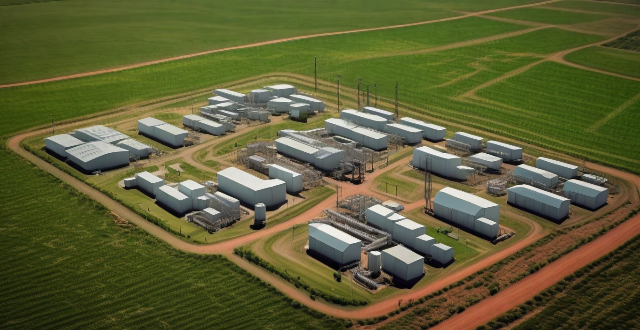
What is the potential of algae-based biofuels in providing a renewable energy alternative ?
Algae-based biofuels offer a renewable energy alternative with high productivity, low environmental impact, and potential to reduce greenhouse gas emissions. They can be grown on non-arable land, require no herbicides or pesticides, and absorb CO2 during photosynthesis. Technological advancements in genetically modified strains and cultivation techniques are improving growth rates and oil yields. However, challenges related to scalability, economic viability, and supply chain reliability must be addressed for widespread adoption as a sustainable energy solution.
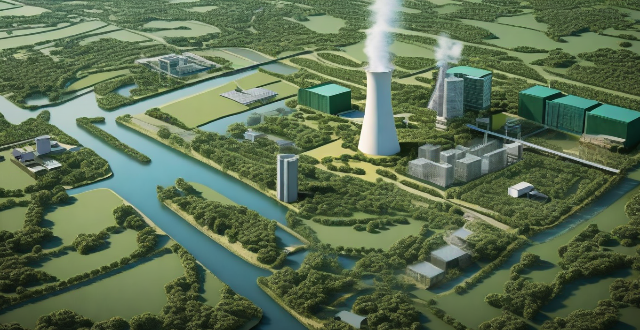
How does geothermal energy work and is it a viable alternative energy source ?
Geothermal energy is a renewable and sustainable source of energy that harnesses the natural heat from within the Earth's crust. This energy is obtained by drilling wells into the Earth's crust, where the heat is transferred to water or another fluid in a heat exchanger. The heated fluid then spins a turbine to generate electricity. There are three main types of geothermal power plants: dry steam, flash steam, and binary cycle. While geothermal energy has many benefits, including being renewable, cost-effective, and abundant in certain areas, it also comes with high upfront costs and location limitations. Additionally, there are environmental impacts associated with its use, such as potential contributions to earthquakes and impacts on local ecosystems. Despite these challenges, geothermal energy remains a valuable addition to our portfolio of renewable energy sources.
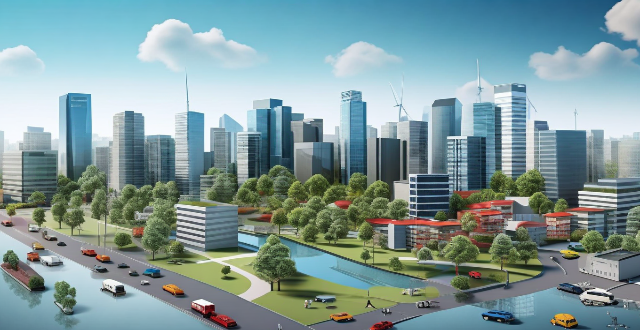
How can developing countries benefit from implementing renewable energy solutions ?
Renewable energy solutions offer significant benefits for developing countries, including reduced energy costs, job creation, improved health and environmental quality, increased energy security, and climate change mitigation. By investing in renewable energy infrastructure, these countries can build more sustainable and prosperous futures for themselves and their citizens.

In what ways can energy storage solutions improve grid stability and reliability ?
Energy storage solutions play a crucial role in enhancing grid stability and reliability. They contribute to balancing supply and demand, providing ancillary services, integrating renewables, improving resilience, optimizing economic efficiency, facilitating distributed generation, and supporting transmission and distribution systems. Energy storage systems can absorb excess energy during low demand periods and release it during peak times, helping to level the load on the grid. They also provide frequency regulation and voltage support, smoothing out the variability of renewable sources like wind and solar. Energy storage enhances resilience by providing blackstart capability and islanding, allowing parts of the grid to be isolated and continue supplying power in case of major faults. It optimizes economic efficiency by enabling arbitrage and deferring costly grid upgrades. Energy storage facilitates distributed generation by allowing consumers with distributed generation to store energy during off-peak hours and use it during peak time periods, reducing their electricity bills. Overall, energy storage solutions are becoming increasingly vital for modernizing and strengthening our electrical grids.
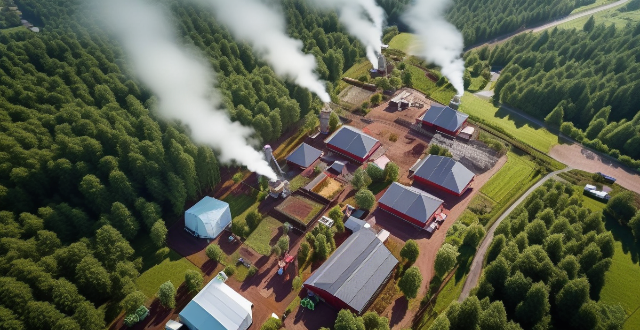
What role do renewable energies play in enhancing energy security and mitigating climate change ?
Renewable energies enhance energy security and mitigate climate change by diversifying energy sources, providing sustainable and reliable energy supplies, enabling decentralized energy production, reducing greenhouse gas emissions, promoting clean air and water, and conserving natural resources.

What role does natural gas play in the global energy market ?
Natural gas is a key player in the global energy market due to its environmental advantages, economic benefits, contributions to energy security, technological advancements, and versatile applications across sectors.

Can second-generation biofuels overcome the food vs. fuel debate and contribute to energy security ?
The article discusses the potential of second-generation biofuels to address the food vs. fuel debate and contribute to energy security. It explains that these biofuels are produced from non-food sources such as agricultural waste, wood chips, and other organic materials, which do not compete with food production. The article highlights how second-generation biofuels can diversify energy sources, reduce emissions, and create jobs in rural areas. However, it also notes that further technology development, infrastructure development, and public perception challenges need to be addressed to fully realize their potential.

What are the benefits of using lithium-ion batteries in renewable energy systems ?
The benefits of using lithium-ion batteries in renewable energy systems include high energy density, long lifespan, low maintenance, fast charging, and high efficiency. These advantages make them an ideal choice for storing and distributing renewable energy.

Is carbon sequestration a viable solution to combat climate change ?
Carbon sequestration can help reduce atmospheric CO2 levels and support renewable energy sources, but it faces technical feasibility, economic costs, storage capacity, and potential risks. It should be part of a comprehensive strategy to combat climate change.

Is green technology a sustainable solution for environmental problems ?
Green technology offers a promising pathway towards sustainability, but it's not without its challenges. While it has the potential to significantly mitigate environmental problems, it requires substantial investment, infrastructure development, and policy support to reach its full potential.

How can wind energy contribute to a sustainable future ?
Wind energy is a renewable and sustainable source of power that can significantly contribute to a more sustainable future. It offers several benefits including reducing carbon emissions, stimulating economic growth, enhancing energy security, driving technological innovation, compatible land use, community engagement, scalability, improving health impacts, and promoting education and awareness. By incorporating wind energy into our energy mix, we can create a cleaner, healthier, and more sustainable environment for future generations.

How do energy-efficient buildings reduce carbon footprint ?
Energy-efficient buildings are crucial for reducing carbon footprint by minimizing energy use and optimizing resources. They incorporate features like proper insulation, air tightness, advanced HVAC systems, renewable energy sources, and smart technology to reduce energy consumption, lower greenhouse gas emissions, and mitigate climate change impact. These structures offer benefits such as lower utility bills, increased comfort, reduced maintenance costs, and higher resale value. Energy-efficient buildings play a significant role in combating climate change and promoting a sustainable future.

Is geoengineering a viable solution to global warming ?
Geoengineering, also known as climate engineering or earth system management, refers to the intentional manipulation of the global climate on a large scale to counteract the effects of global warming and reduce the risks associated with climate change. While geoengineering has potential benefits such as mitigating climate change, providing faster responses compared to conventional methods, and being relatively inexpensive, it also comes with uncertainties regarding long-term effects, lack of international regulation and governance, and limited scope compared to other mitigation strategies. Therefore, geoengineering should not be seen as a substitute for conventional mitigation strategies but rather complement them. Extensive research and international cooperation are essential before implementing any large-scale geoengineering projects to ensure their safety and effectiveness in addressing climate change challenges.

How can wind energy be stored for later use ?
Storing wind energy is crucial for integrating renewable energy into power grids. Wind turbines produce electricity intermittently based on weather conditions, unlike traditional power plants that can adjust output on demand. Several methods exist to store wind energy effectively, including battery storage systems, pumped hydro storage, compressed air energy storage (CAES), chemical batteries, flow batteries, thermal storage, and flywheels. When selecting a storage method, factors such as capacity, duration, cost, efficiency, environmental impact, and geographic suitability must be considered. As technology advances and costs decrease, we can expect more innovative solutions for efficient wind energy storage.

What are some common challenges faced by sports facility managers and how can they be addressed ?
The text discusses five common challenges faced by sports facility managers, which include high operating costs, maintenance issues, customer satisfaction, safety concerns, and marketing and promotion. For each challenge, the author provides a solution to help sports facility managers overcome these obstacles. 1. **High Operating Costs:** Implement budget planning, energy efficiency measures, and staff training to reduce expenses. 2. **Maintenance Issues:** Adopt preventive maintenance schedules, outsource services, and educate users on proper equipment usage. 3. **Customer Satisfaction:** Establish feedback mechanisms, provide customer service training, and diversify offerings to meet user needs. 4. **Safety Concerns:** Conduct regular safety checks, develop emergency plans, and ensure adequate supervision to prevent accidents. 5. **Marketing and Promotion:** Utilize social media, form partnerships, and implement loyalty programs to attract and retain users.

What are some tips for labeling and keeping track of different homemade cleaning solutions ?
Label and keep track of homemade cleaning solutions with clear labels, appropriate containers, color coding, and a list. Store them out of reach of children and pets, and date the solutions for replacement tracking.

How do I resolve conflicts within a study group ?
Resolving Conflicts within a Study Group: Identify the source of conflict, communicate openly and honestly, find common ground, brainstorm solutions, choose and implement a solution, evaluate and adjust, and maintain a positive atmosphere.

Is carbon capture a viable solution for all industries and sectors ?
Carbon capture technology, while offering significant potential to reduce industrial carbon emissions, faces challenges in universal adoption due to high costs and energy penalties. Its applicability varies across sectors like power generation, manufacturing, and transportation. Economic considerations include hefty investments and potential job creation, while environmental benefits encompass direct emission reduction and support for a circular economy. The viability of carbon capture depends on industry-specific factors, economic conditions, and technological progress.

How efficient is wind energy compared to other renewable sources ?
The efficiency of wind energy is influenced by factors such as capacity factor, technological advancements, and site specificity. Compared to other renewable sources like solar, hydropower, geothermal, biomass, and tidal/wave energy, wind energy has a relatively high capacity factor ranging from 35% to 45%. Technological improvements have increased the efficiency of wind turbines over the years, making them more productive. However, the efficiency of wind farms is highly dependent on the location, with optimal sites achieving higher efficiency rates. In conclusion, wind energy compares favorably to other renewable sources in terms of efficiency, but the choice between different renewable energies often depends on local conditions, economic factors, and technological advancements.

Are there any natural or eco-friendly disinfection solutions that are effective against viruses ?
The article discusses natural and eco-friendly disinfection solutions that are effective against viruses. It mentions four options: lemon juice and salt, white vinegar, tea tree oil, and hydrogen peroxide. Each option has a procedure for use and is effective in killing germs on surfaces. The article concludes that while these solutions may require more time and effort compared to chemical disinfectants, they offer a safer alternative for those concerned about environmental impact and health risks associated with harsh chemicals.
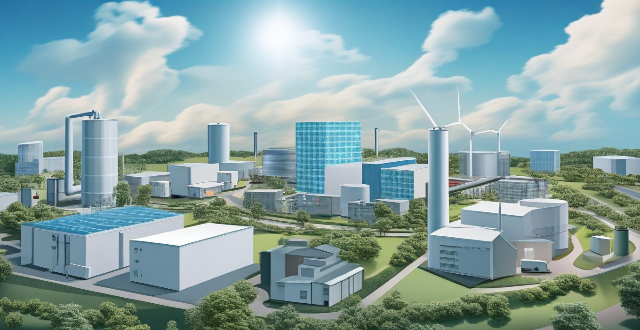
What are the benefits of using a distributed energy system ?
Distributed energy systems (DES) have become increasingly popular due to their numerous benefits. These systems can include solar panels, wind turbines, micro-hydro plants, and other renewable energy sources. The key benefits of using a distributed energy system are increased energy efficiency, lower energy costs, improved reliability and resilience, environmental sustainability, encouragement of local economy and job creation, promotion of energy independence and security, and flexibility and scalability. Adopting a distributed energy system brings numerous benefits ranging from increased efficiency and cost savings to improved reliability, environmental sustainability, economic development, and energy security.

What is wind energy and how effective is it compared to other renewable sources ?
This article provides an overview of wind energy, discussing its definition, effectiveness compared to other renewable sources, cost-effectiveness, environmental impact, scalability, and availability. It highlights the benefits of wind energy as a clean and sustainable source of electricity that can be produced at any scale and in many parts of the world.

Can you explain the working principle of a flow battery for energy storage ?
Flow batteries are a type of rechargeable battery that store energy in two chemical solutions pumped past an ion-exchange membrane. Key components include electrolyte tanks, pumps, and the cell stack. During charging, electrical energy is converted into chemical energy by moving ions across the membrane, storing them as potential gradients. Discharging reverses this process to generate electricity. Flow batteries offer scalability, decoupling of power and energy, long lifespan, and good efficiency but face challenges like cost, maintenance, and size. They are suitable for large-scale energy storage applications.

What innovations in technology are helping to combat the climate emergency ?
Innovations in technology are helping to combat the climate emergency by developing solutions that mitigate its effects and contribute to a sustainable future. These include renewable energy sources, energy efficiency improvements, carbon capture and storage, green infrastructure, and circular economy principles. By embracing these innovations and continuing to develop new solutions, we can work together to address the challenges posed by climate change and create a healthier planet for future generations.